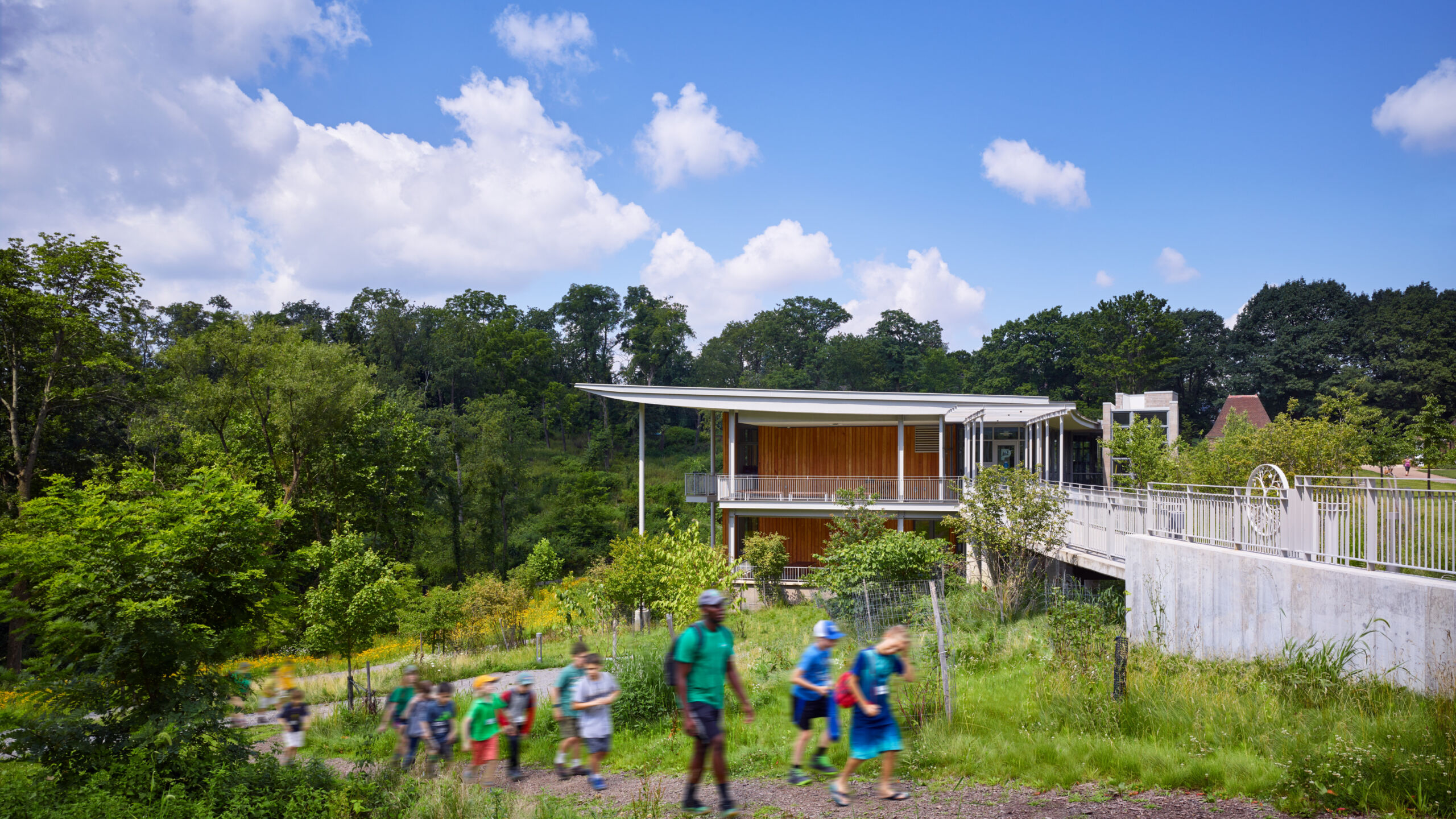
Frick Environmental Center Achieves Prestigious Living Building Certification
After more than a year of extensive testing and documentation, the Frick Environmental Center (FEC) has achieved Living Building certification, the world’s most rigorous proven performance standard by the International Living Future Institute. Designed by renowned architecture firm Bohlin Cywinski Jackson, the FEC is the first Living Building in the U.S. that is municipally-owned and free and open to the public.
“The international recognition of the Frick Environmental Center is the perfect reflection of the deeply-rooted convictions shared by the City of Pittsburgh, the Parks Conservancy, and the entire construction and design team.” said Patricia Culley, Bohlin Cywinski Jackson senior associate and FEC project architect.
Completed in 2016, the 16,000-square-foot center was certified LEED Platinum by the U.S. Green Building Council in December 2017, received an Award of Excellence from AIA Committee on Education in April, and recognized with a Leadership Award by the Green Building Alliance last fall for its role in a decade-long vision of incorporating the world’s highest sustainability standards into a free, public, municipally-owned building.
Bohlin Cywinski Jackson collaborated with the Pittsburgh Parks Conservancy, the City of Pittsburgh, construction manager PJ Dick, and landscape architects LaQuatra Bonci to bring the environmental center to life. Made possible via donations and a community-based process that began in 2011, the facility allows students of all ages to partake in environmental classes, events, and programs. It also acts as a gateway to the 644-acre Frick Park, encouraging visitors to experience the surrounding landscape.
“What a great accomplishment for the Pittsburgh Parks Conservancy and the City,” said Pittsburgh Mayor William Peduto. “Together, we are continuing our leadership in green building standards and environmental education for all.”
The FEC is one of only 21 buildings in the world to achieve Living Building-certification; the facility is the second certified in Pittsburgh and Pennsylvania, sharing the honor with the Phipps Center for Sustainable Landscapes. However, the center is the first building to meet the Living Building Challenge designation under v2.1. To qualify, the building must produce as much energy as it consumes annually, eliminate toxic and harmful chemicals, and collect and treat its own water.
“We are proud to have one of the greenest buildings in the world that also functions as a tremendous resource for our community,” said Jayne Miller, CEO and president of the Pittsburgh Parks Conservancy. “It is truly a regional treasure.”
Bohlin Cywinski Jackson has worked in Pittsburgh for more than 40-years, and recently moved into a new office space in the historic Alcoa Building. They have designed a variety of projects in and around the city, including multiple academic buildings for Carnegie Mellon University, and several award-winning projects for the Western Pennsylvania Conservancy, including the adaptive reuse of the historic Barn at Fallingwater and the High Meadow Residences and Studio.
###
About the Pittsburgh Parks Conservancy
The Pittsburgh Parks Conservancy was founded in December 1996 by a group of citizens concerned with the deteriorating conditions of Pittsburgh’s historic city parks. A non-profit organization, the Parks Conservancy works closely with the City of Pittsburgh under an official public-private partnership agreement to restore and improve the city’s park system to its full potential. To date, the Parks Conservancy has raised over $105 million and completed 17 major park improvement projects. Annually the Parks Conservancy works with thousands of volunteers and provides programming for more than 5,000 children.
About the International Living Future Institute
The International Living Future Institute (ILFI) is a nonprofit working to build an ecologically-minded, restorative world for all people. Using principles of social and environmental justice, ILFI seeks to counter climate change by pushing for an urban environment free of fossil fuels. ILFI runs the Living Building Challenge, which is the world’s most aspirational green building standard, and several other programs: the Living Product Challenge, the Living Community Challenge, and the Reveal, Declare and Just labels. These programs develop a green framework for living in a 21st-century world.
About the Living Building Challenge
The Living Building Challenge (LBC) is the world’s most aspirational standard for green buildings. Going above and beyond LEED certification, Living Buildings strive for net-zero or net-positive energy, are free of toxic chemicals and lower their energy footprint many times below the generic commercial structure. To be certified under the LBC, projects must meet a series of ambitious performance requirements over a minimum of 12 months of continuous occupancy. There are three types of certification under the Challenge: Living Building Certification, Petal Certification and Zero Energy Building Certification.
